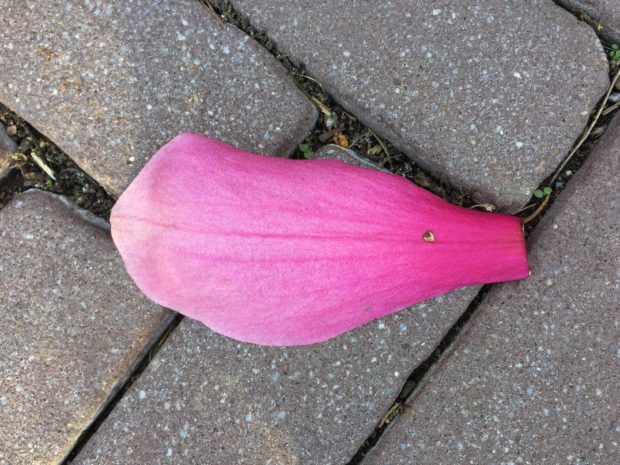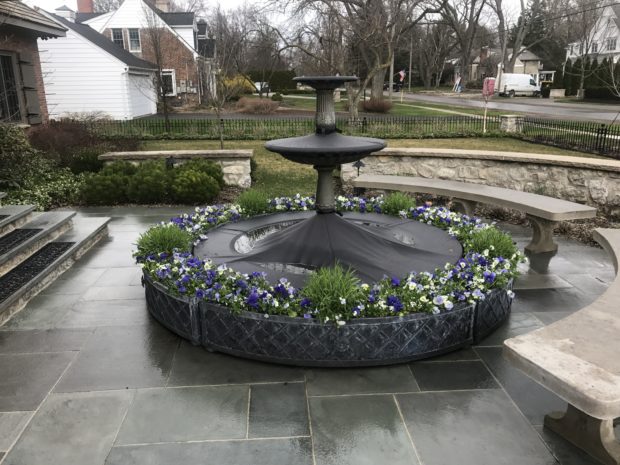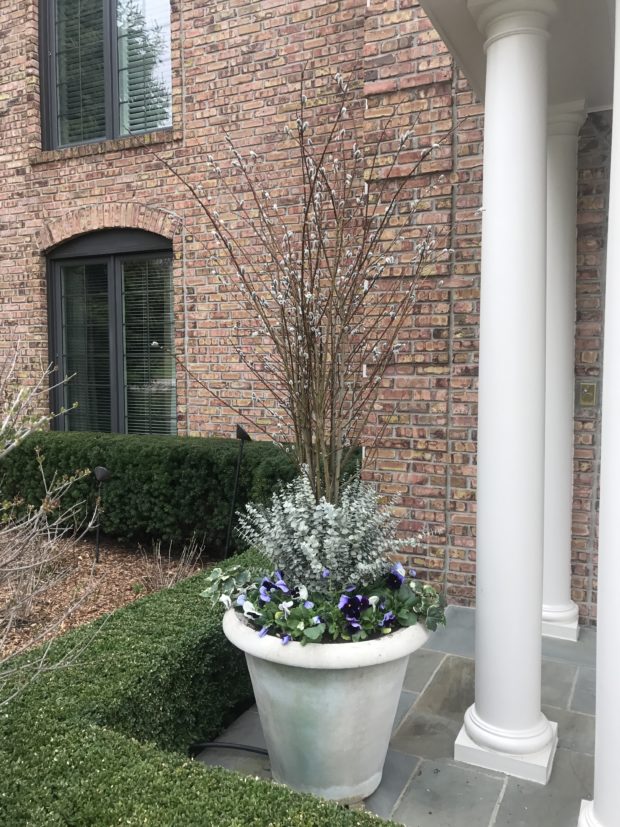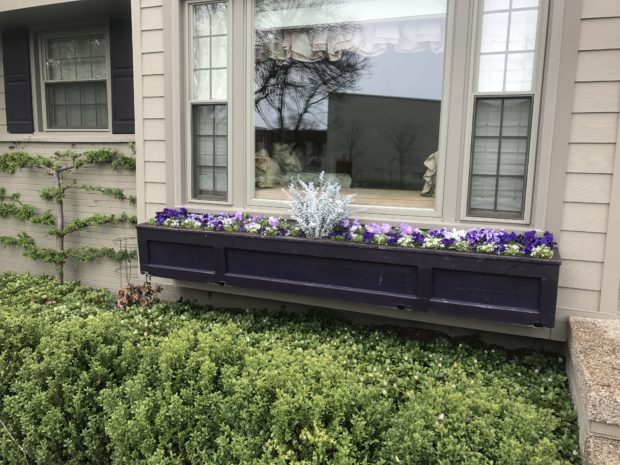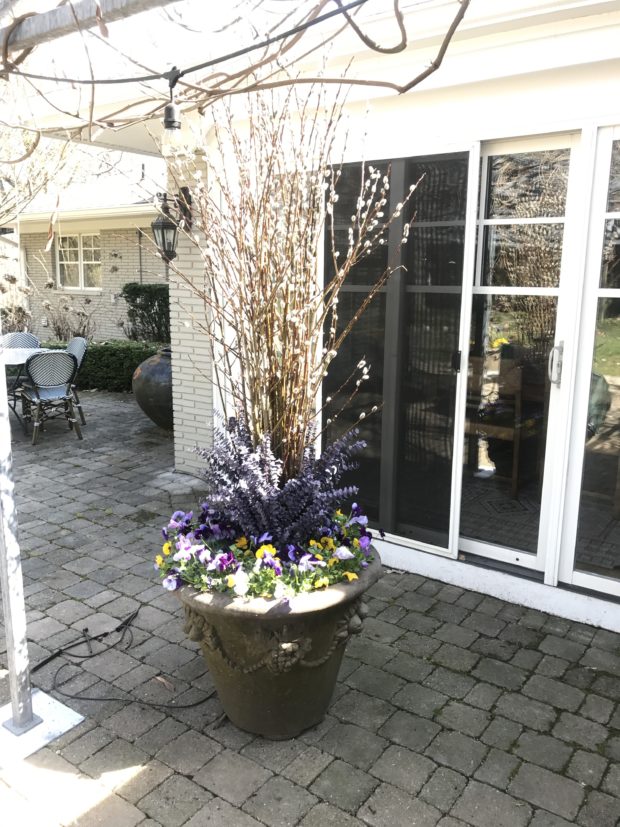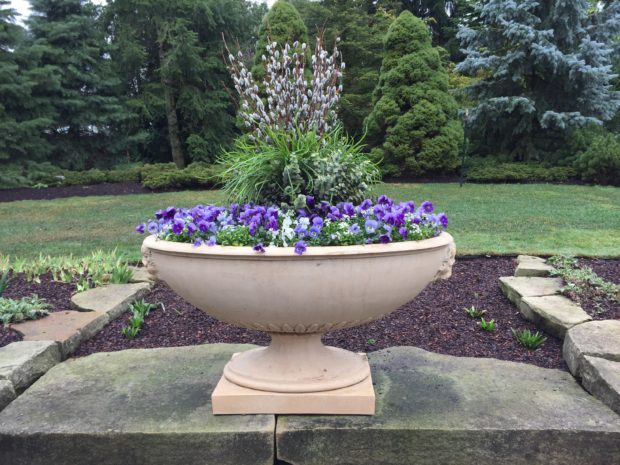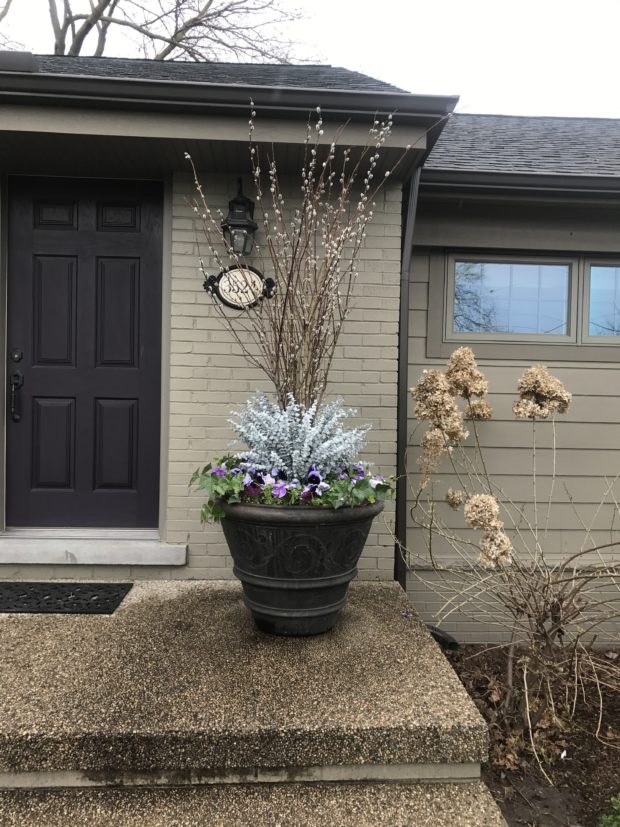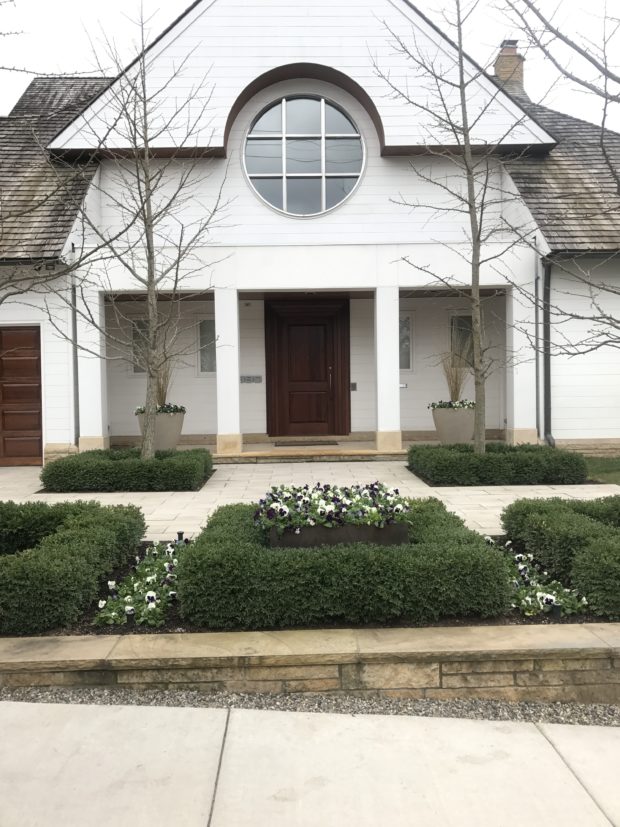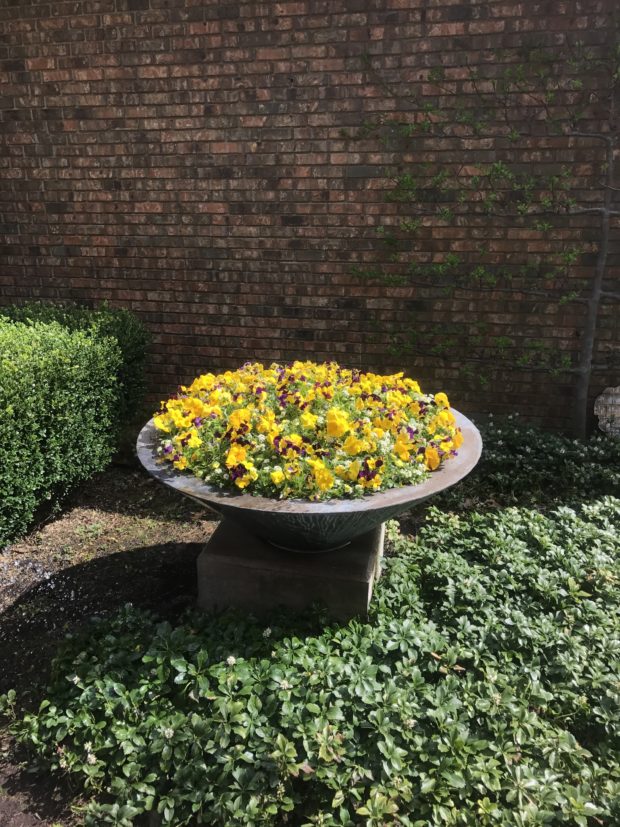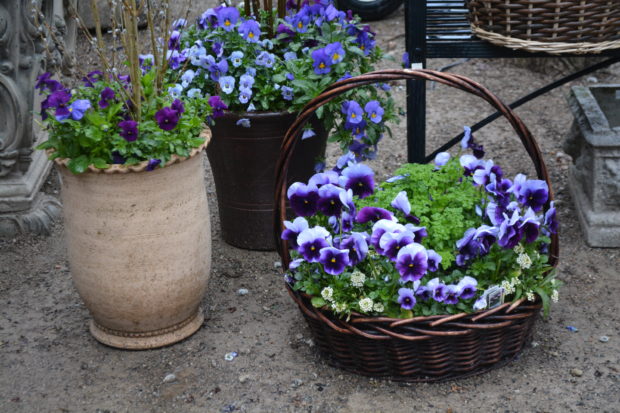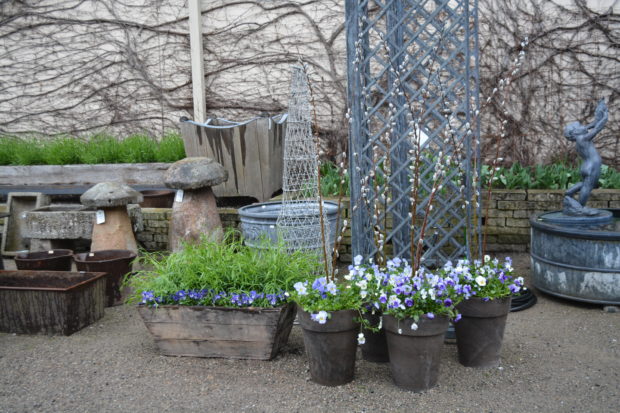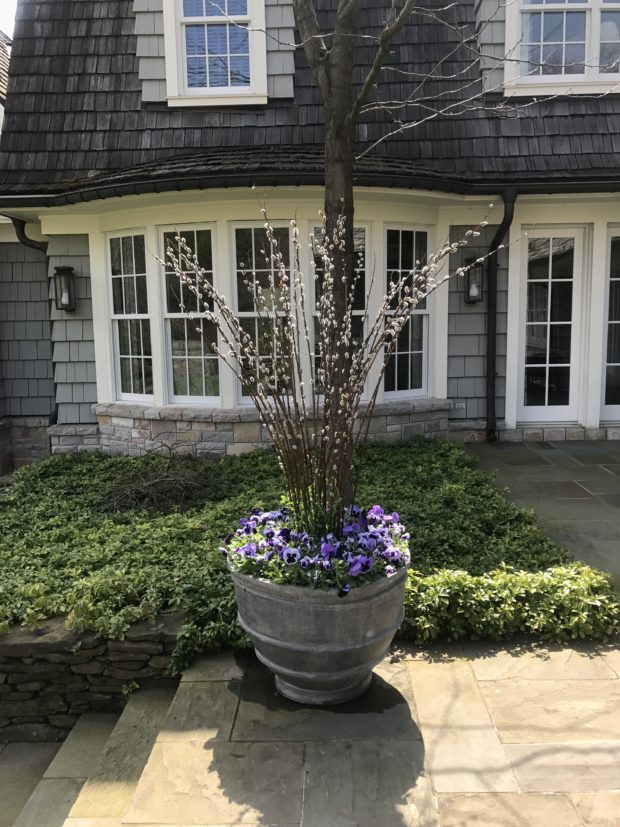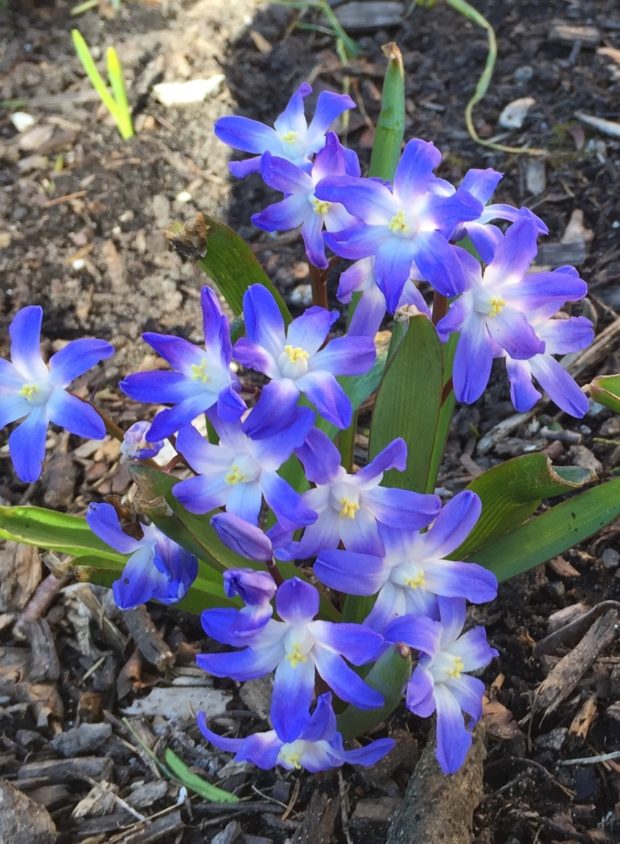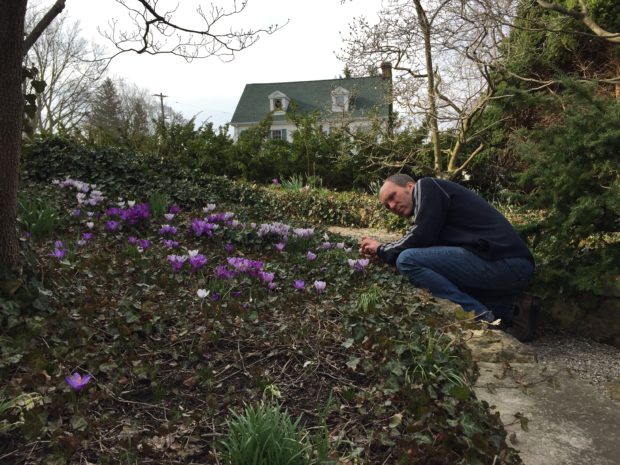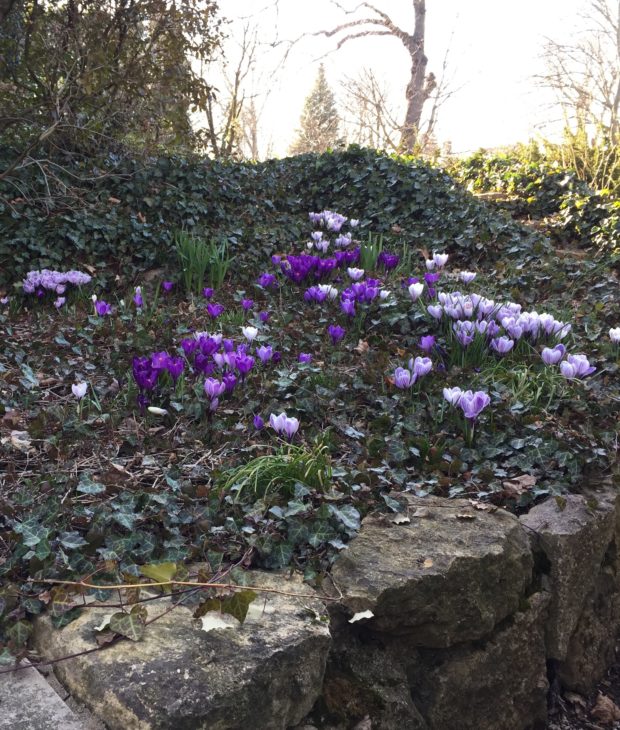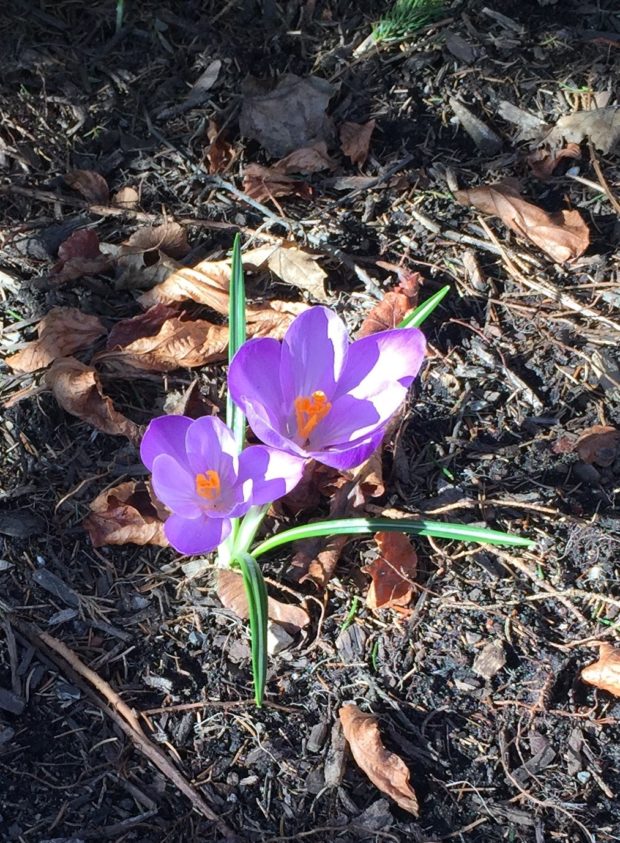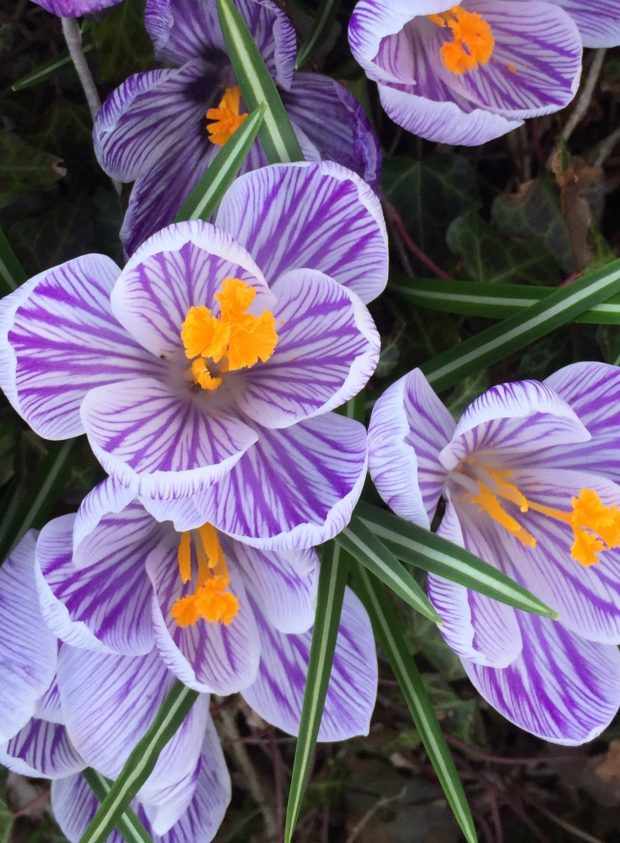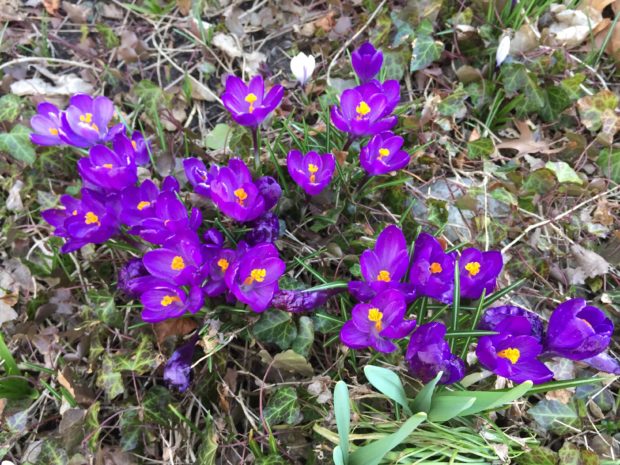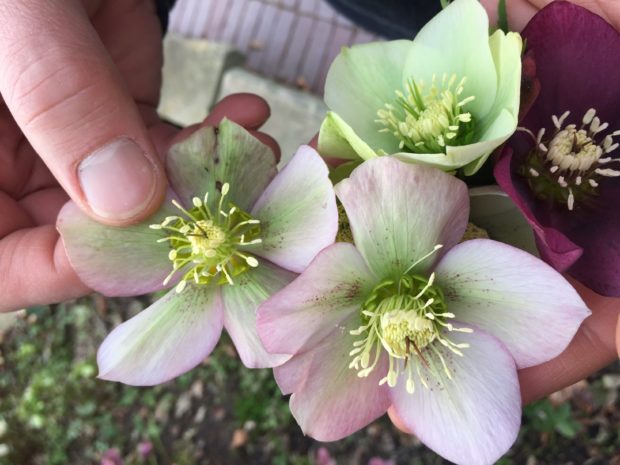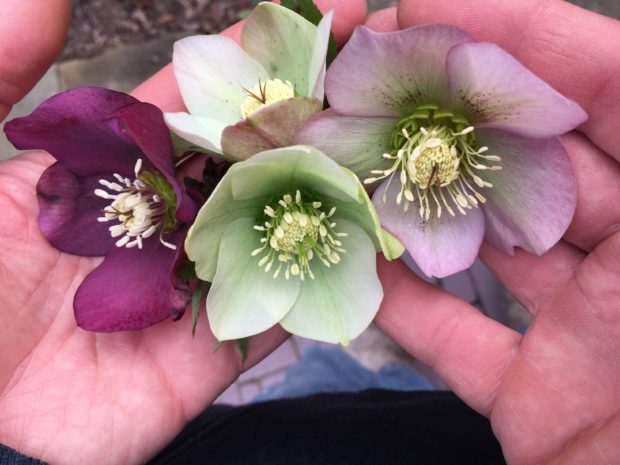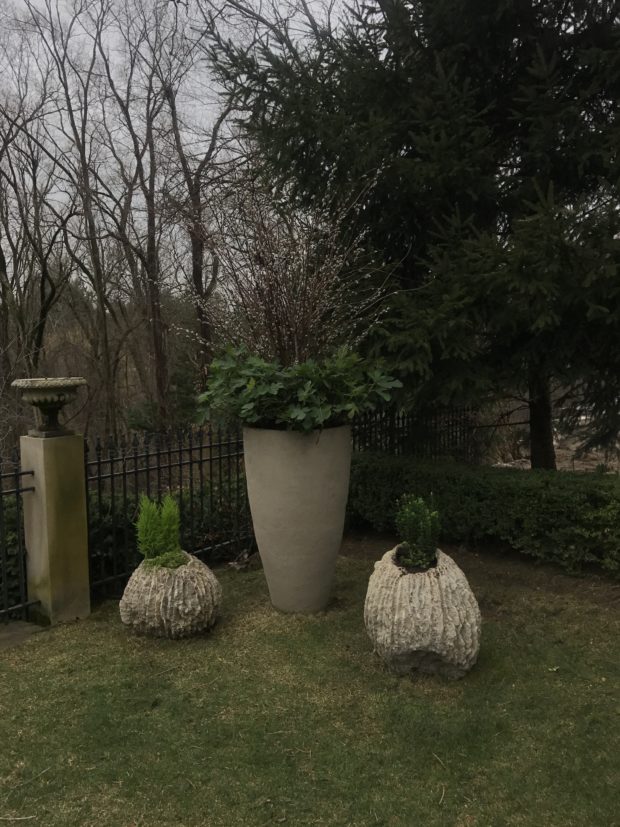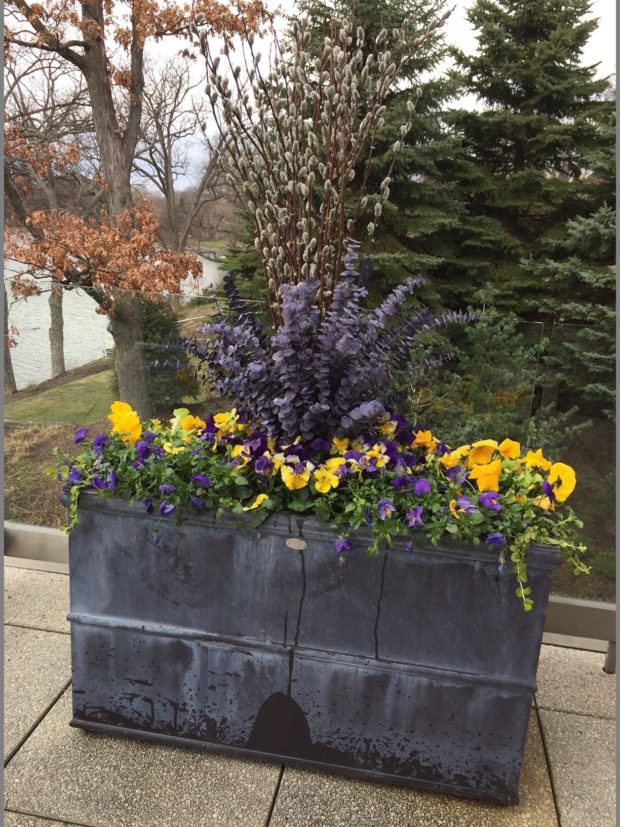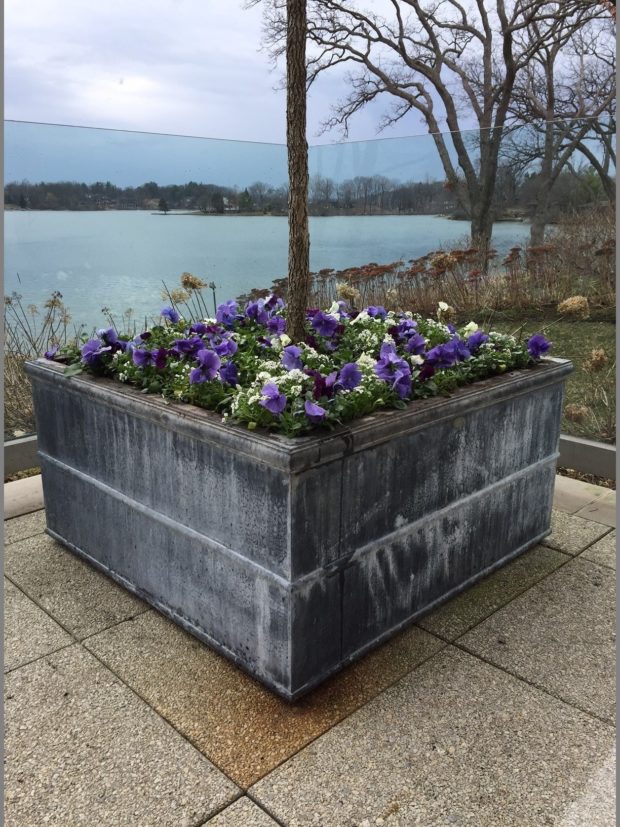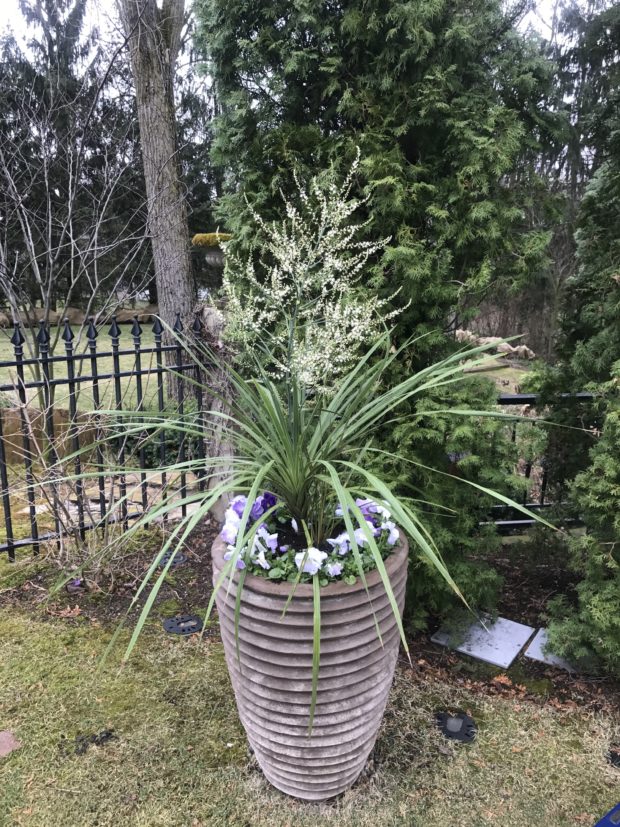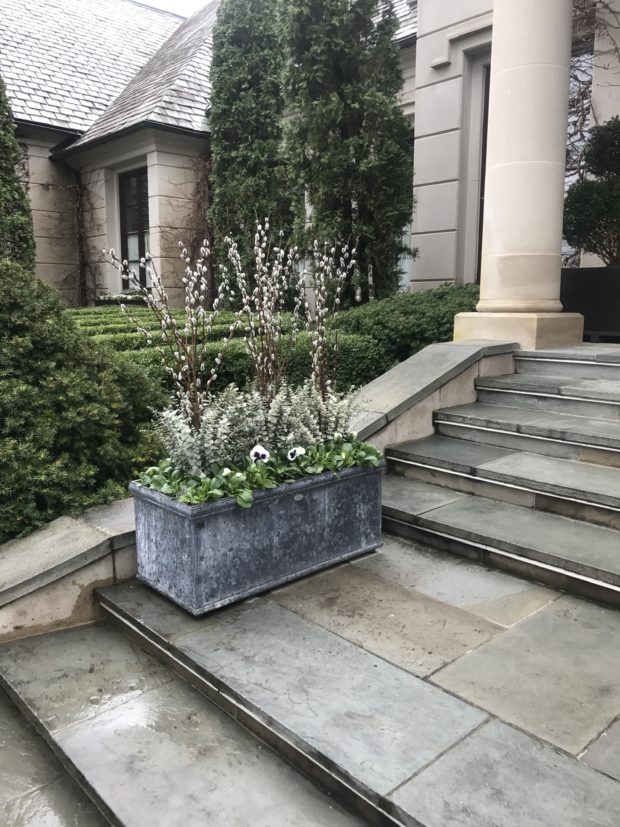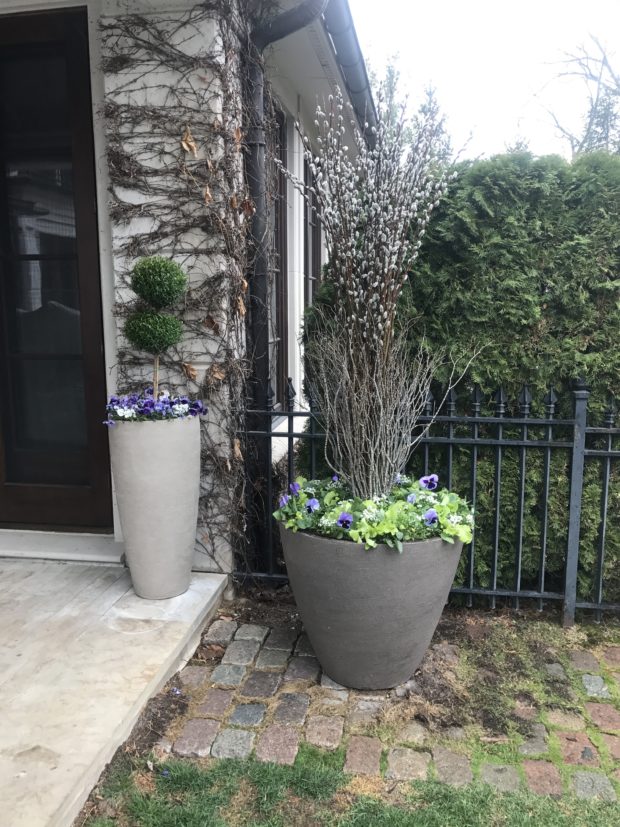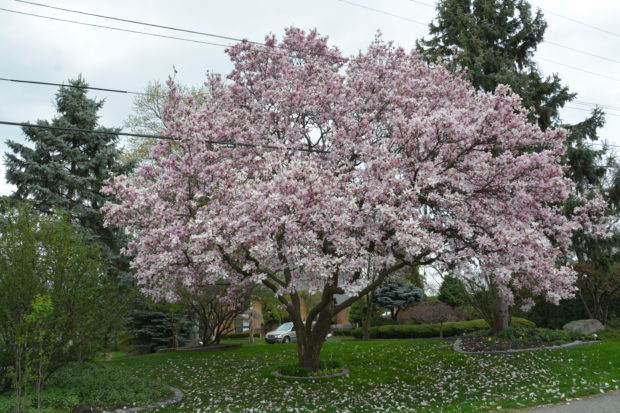 The saucer magnolias are in outrageously heavy bloom everywhere I go, and everywhere I look. They are over the top beautiful this year, much to my delight. They ornament the spring blooming landscape in a way no other flowering tree could hope to rival. Every saucer magnolia in bloom now I can spot from better than a block away, the blooms are so profuse. They blanket every branch with 6″ long petals and sepals that look like a saucer, and flutter in the slightest breeze. When the saucer magnolias are good, they are the visual equivalent of a torrid romance. So much drama! The entire canopy of the tree is dressed in the most glorious shades of pale and rose pink. The texture is incredible.The saucer magnolia in bloom, formally known as magnolia soulangiana, is a spring moment like no other.
The saucer magnolias are in outrageously heavy bloom everywhere I go, and everywhere I look. They are over the top beautiful this year, much to my delight. They ornament the spring blooming landscape in a way no other flowering tree could hope to rival. Every saucer magnolia in bloom now I can spot from better than a block away, the blooms are so profuse. They blanket every branch with 6″ long petals and sepals that look like a saucer, and flutter in the slightest breeze. When the saucer magnolias are good, they are the visual equivalent of a torrid romance. So much drama! The entire canopy of the tree is dressed in the most glorious shades of pale and rose pink. The texture is incredible.The saucer magnolia in bloom, formally known as magnolia soulangiana, is a spring moment like no other.
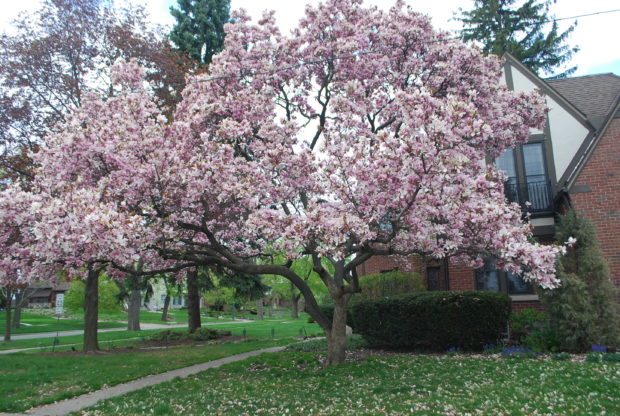 Perhaps it is a good thing that a heavy bloom on this magnolia is not always a given. All that saucy sweetness might be cloying in too big or too long a dose. Trees that profusely flower-I can never decide if I like that or not. With perfectly moderate and cool days and nights, magnolias may bloom for a week to 10 days. Any weather too hot, too cold, or too this or that will cut surely cut short the display. The saucer magnolia flowers are notoriously susceptible to an early demise from a spring freeze. As freezing night temperatures in March are not unusual, years with no flowers, and more frequent years with sparse flowers are the norm. So when nature is cooperative, I truly enjoy the spectacle of it all. Planting a magnolia out of a south facing full sun location can help delay the bloom long enough for the threat of frost to pass.
Perhaps it is a good thing that a heavy bloom on this magnolia is not always a given. All that saucy sweetness might be cloying in too big or too long a dose. Trees that profusely flower-I can never decide if I like that or not. With perfectly moderate and cool days and nights, magnolias may bloom for a week to 10 days. Any weather too hot, too cold, or too this or that will cut surely cut short the display. The saucer magnolia flowers are notoriously susceptible to an early demise from a spring freeze. As freezing night temperatures in March are not unusual, years with no flowers, and more frequent years with sparse flowers are the norm. So when nature is cooperative, I truly enjoy the spectacle of it all. Planting a magnolia out of a south facing full sun location can help delay the bloom long enough for the threat of frost to pass.
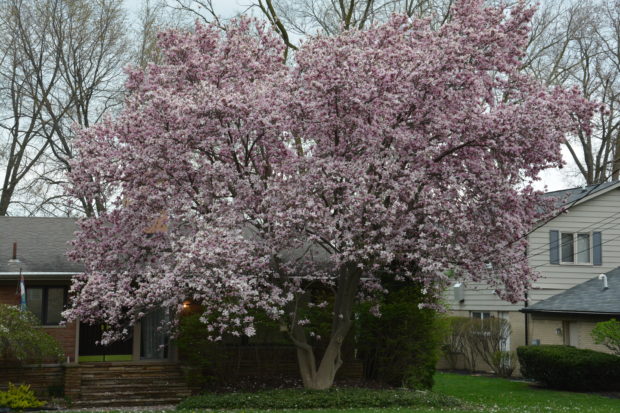 Saucer magnolias in my area have quite hefty trunks, indicating a planting from many years ago. That speaks volumes about the hardiness and the suitability of the tree for this area. Though the flowers may frost off before they open, the trees are completely hardy to zone 4. They are a mid sized tree that matures to about 25 feet tall and equally as wide, meaning it is easier to place them on a small property than a shade tree. The tree itself is every bit as ornamental as the flowers. The bark is a smooth and pleasing shade of gray. Old trees have colonies of lichens ornamenting that bark. Mature trees have very sculptural overall branch structure. The glossy leaves are large. This is a tree that has great texture in bloom, and in leaf. The yellow fall color is spectacular.
Saucer magnolias in my area have quite hefty trunks, indicating a planting from many years ago. That speaks volumes about the hardiness and the suitability of the tree for this area. Though the flowers may frost off before they open, the trees are completely hardy to zone 4. They are a mid sized tree that matures to about 25 feet tall and equally as wide, meaning it is easier to place them on a small property than a shade tree. The tree itself is every bit as ornamental as the flowers. The bark is a smooth and pleasing shade of gray. Old trees have colonies of lichens ornamenting that bark. Mature trees have very sculptural overall branch structure. The glossy leaves are large. This is a tree that has great texture in bloom, and in leaf. The yellow fall color is spectacular.
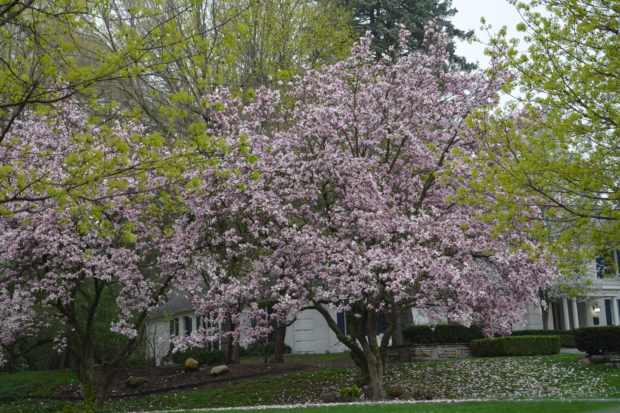 I have seen magnolias devastated by scale, or marred by fungus, but by and large they are fairly carefree. They like the middle of the road. Soil that is not too dry or too wet. They like a good amount of sun, but they don’t fuss if there is a little less. They will endure in less than perfect conditions. They mean to oblige. This makes them a perfect choice for a gardener looking for an ornamental tree of substance. Though some might fuss about the petal drop, I find that pink litter on the grass to be an excellent reason to have some grass underneath them. The effect is magical.
I have seen magnolias devastated by scale, or marred by fungus, but by and large they are fairly carefree. They like the middle of the road. Soil that is not too dry or too wet. They like a good amount of sun, but they don’t fuss if there is a little less. They will endure in less than perfect conditions. They mean to oblige. This makes them a perfect choice for a gardener looking for an ornamental tree of substance. Though some might fuss about the petal drop, I find that pink litter on the grass to be an excellent reason to have some grass underneath them. The effect is magical.
 There are many other varieties and hybrids of magnolias, many of which are garden worthy. I plant them whenever I get a chance. They are as sculptural in their structure as they are ethereal in flower. If this is not enough to persuade you to plant a saucer magnolia, consider this. A 2 gallon size saucer magnolia is available to you at your local garden center right now at a very reasonable cost. Plant a small magnolia, and stand back. Sooner than you think, this one magical magnolia week of the year will be a week you will treasure .
There are many other varieties and hybrids of magnolias, many of which are garden worthy. I plant them whenever I get a chance. They are as sculptural in their structure as they are ethereal in flower. If this is not enough to persuade you to plant a saucer magnolia, consider this. A 2 gallon size saucer magnolia is available to you at your local garden center right now at a very reasonable cost. Plant a small magnolia, and stand back. Sooner than you think, this one magical magnolia week of the year will be a week you will treasure .
 This beautiful old saucer magnolia in flower is already shedding petals. Lovely, this.
This beautiful old saucer magnolia in flower is already shedding petals. Lovely, this.
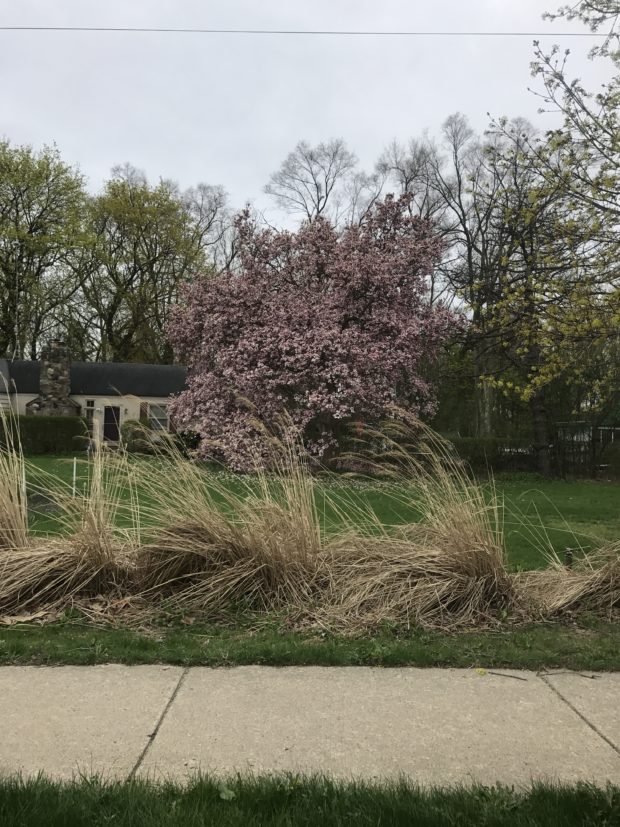 This picture I took on the fly from my car, which I stopped in the middle of a very busy road. The person behind me was irritated, but when the saucer magnolias are good, I take time to enjoy them. Never mind his honking. The spring is a time to take the time to enjoy.
This picture I took on the fly from my car, which I stopped in the middle of a very busy road. The person behind me was irritated, but when the saucer magnolias are good, I take time to enjoy them. Never mind his honking. The spring is a time to take the time to enjoy.
 I do not have any saucer magnolias at home. Their mature width is tough in a landscape as small as mine. I planted the magnolia “Galaxy”. They have a more upright habit of growth, and tend to be single trunked. That shape suits my landscape better than a saucer magnolia. That moment when their intensely rose pink flowers are backed up by my Norway maple in full bloom is an experience of spring that makes my heart pound. This said, I am sure the spring season energizes every gardener. I am so glad that other gardeners close to me have the saucer magnolias of considerable age and in full bloom for me to enjoy. My landscape is happily a relative of what goes on in my neighborhood and comunity.
I do not have any saucer magnolias at home. Their mature width is tough in a landscape as small as mine. I planted the magnolia “Galaxy”. They have a more upright habit of growth, and tend to be single trunked. That shape suits my landscape better than a saucer magnolia. That moment when their intensely rose pink flowers are backed up by my Norway maple in full bloom is an experience of spring that makes my heart pound. This said, I am sure the spring season energizes every gardener. I am so glad that other gardeners close to me have the saucer magnolias of considerable age and in full bloom for me to enjoy. My landscape is happily a relative of what goes on in my neighborhood and comunity.
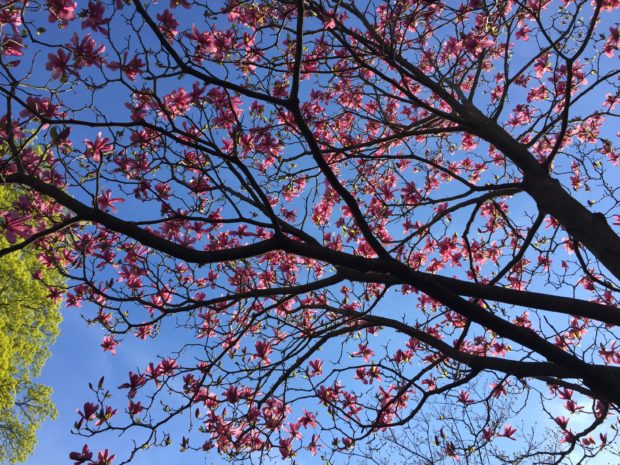 Galaxy magnolia in bloom overhead
Galaxy magnolia in bloom overhead
